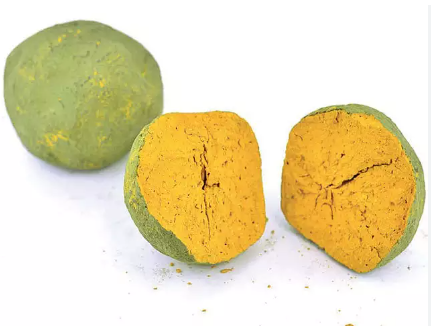The Starry Night, painted by Vincent Van Gogh on a summer night in 1889, is one of the world’s most famous paintings. It showcases a dreamy star-filled night sky that he saw from the window of his establishment in Saint-Rémy-de-Provence.
Interestingly, the colour in the picture that was used to create the radiant moon has an Indian connection.
The Indian Yellow
The yellow of his artwork “The Indian Yellow” was formed by the urine of wasted cows who were supposedly force-fed nothing but mango leaves in the then-city of Monghyr, now Munger in Bihar.

When government official TN Mukharji filed a report to the Society of Arts in London in 1882, the source of the pigment was established. In it, he insisted that he had witnessed first-hand “a sect of milkmen, feed the cows solely with mango leaves” which, he said, intensifies the “bile pigment and imparts to the urine a bright yellow colour”.
The cows’ urine was collected in pottery pots and heated over an open flame, filtered, dried, and clenched into pigment clumps called ‘piuri’. The renowned ‘Indian Yellow’ was then introduced to Europe as chalky spheres.
After 25 years, the technique was forbidden in Bengal, and its use was discontinued in Europe.
Also Read: The Science Behind Vincent Van Gogh’s “A Starry Night”
Usage In India And West
Since the 15th century, the colour has been frequently utilised in India, and can be found in ancient Mithila paintings of Bihar, as well as Pahari and Mughal miniatures from the 16th to 19th centuries.
Reportedly, a yellow pigment called gorocana, which is also thought to have been created from cow urine, was used in various Indian rites and as tilak.
Several artists in the West were drawn to the colour that was offered in Europe in the form of “chalky spheres” that only needed to be mixed with a binding agent to create paint. Its brilliance was particularly liked by Dutch painters such as Jan Vermeer and Vincent Van Gogh.
Banning Of The Colour
Though there is no definite documented evidence to suggest particular reasons, animal abuse throughout the procurement process finally resulted in a ban on its manufacturing in the early 1900s. Mukharji stated in his assessment that the dehydrated cows “appeared very unhealthy.”
Furthermore, experts have noted that mango leaves are known to contain the toxin urushiol, which would have a negative impact on the health of the bovine animal.
Let us know whether you were aware of this fact in the comments below.
Image Credits: Google Images
Feature image designed by Saudamini Seth
Sources: Indian Express, Money Control, News 18
Find the blogger: Palak Dogra
This post is tagged under: vincent van gogh, van gogh, van gogh paintings, paintings of van gogh, starry night, van gogh starry night painting, colour indian yellow, the indian yellow, cow urine, cow urnine in paintings, indian yellow in paintings
Disclaimer: We do not hold any right, copyright over any of the images used, these have been taken from Google. In case of credits or removal, the owner may kindly mail us.


































